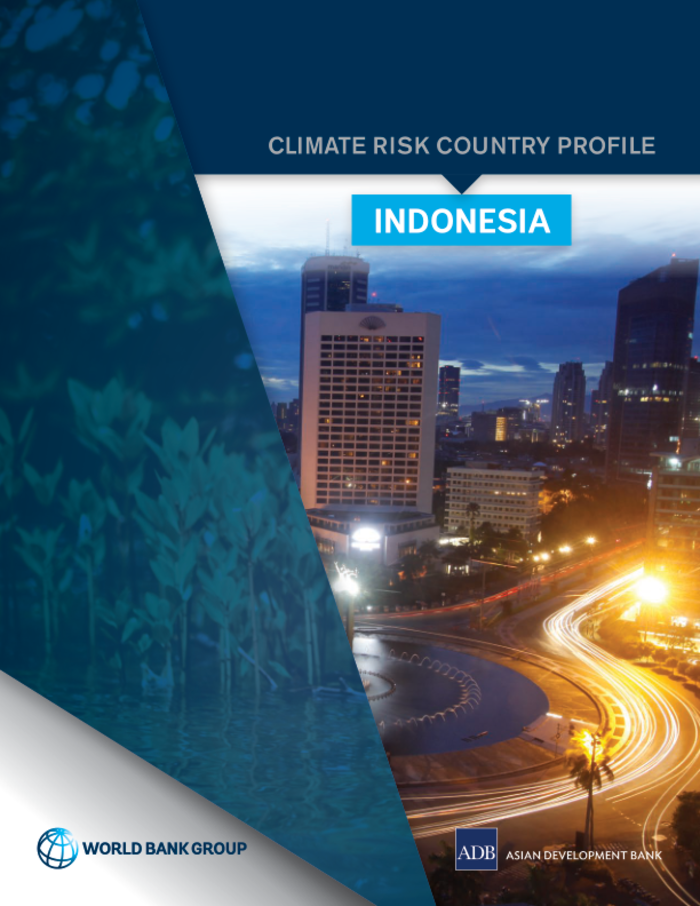Projections of temperature rise for Indonesia are hindered by the lack of fine resolution modelling. Most projections suggest that overall warming could be less than the global average. Warming in the range of 0.8°C–1.4°C is expected by the 2050s in Indonesia. Projections should be approached with caution as higher warming rates could be experienced inland.
While precipitation projections suggest an increase in average annual rainfall, there is considerable variability and uncertainty regarding spatial and temporal distribution. For example, western Indonesia is projected to experience a significantly increased number of dry days by the second half of the 21st century, under the RCP8.5 emissions pathway.
Indonesia is ranked in the top-third of countries in terms of climate risk, with high exposure to all types of flooding, and extreme heat. The intensity of these hazards is expected to grow as the climate changes. Without effective adaptation, population exposure will also rise. For example, the population exposed to an extreme river flood could grow by 1.4 million by 2035–2044.
Indonesia is particularly vulnerable to sea-level rise, with the country ranked fifth highest in the world terms of the size of the population inhabiting lower elevation coastal zones. Without adaptation, the total population likely to be exposed to permanent flooding by the period 2070–2100 could reach over 4.2 million people.
Rice production is particularly vulnerable to climate change as global changes in El Niño patterns are likely to impact the onset and length of the wet season. Higher temperatures are also projected to reduce rice crop yields. Alongside other impacts on agricultural production, Indonesia faces multiple threats to its food security.
Climate change is also likely to have impacts on water availability, disaster risk management, urban development, particularly in the coastal zones, and health and nutrition, with implications for poverty and inequality.
While national-level vulnerability indexes, such as the ND-GAIN Country Index, suggest a reduction in overall national-level climate vulnerability in Indonesia, there is high variation in the potential impacts of climate change at the regional and local levels. Without well planned adaptation and disaster risk reduction efforts at these levels, the poorest and most marginalized communities are likely to experience significant loss and damage as a result of climate change impacts.

